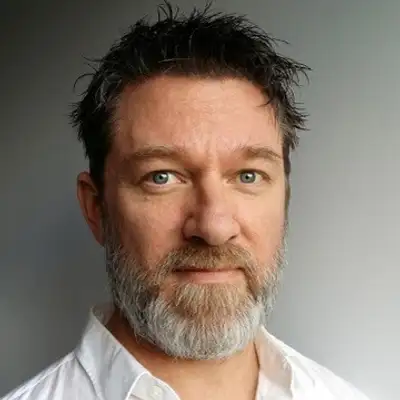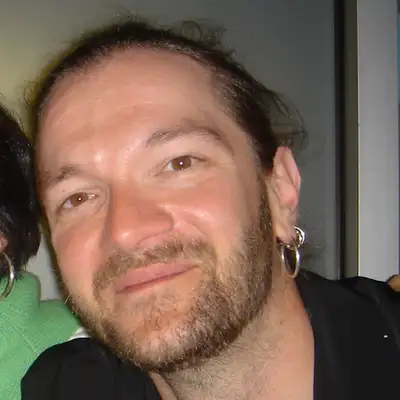Click HERE to leave a rating or comment or here to FOLLOW
- Rudolph Isler
Creators & Guests
What is Swiss Murder Mysteries?
Uncover Switzerland’s most enigmatic murder cases with our riveting investigative true crime podcast.
Dear listeners and followers, Before diving into this bonus episode, I want to extend my heartfelt gratitude to everyone who tuned into The Crystal Cave Murders, the first season of the Swiss Murder Mystery Series. A very special thank you goes out to those who took the time to leave reviews, ratings, or even made a donation. Every dollar contributed is being reinvested into subsequent seasons, enabling me to bring forth new projects for your entertainment. So once again, thank you very much. Now let me provide you with some brief insights into the Swiss Murder Mysteries podcast as a whole, specifically focusing on one topic in the already released 1st season of The Crystal Cave Murders and offering a glimpse into the upcoming season 2 entitled the Sabin Murder Mystery.
Narrator:As you may have noticed, the crystal cave murders and all subsequent seasons are meticulously researched podcasts. These investigative projects demand a significant amount of time for thorough research, writing and production. They require at least 10 times more hours than simply recounting a published case found on the Internet. Not that there's anything wrong with that approach, but all seasons of the Swiss Murder Mysteries take a different path. They are deep dive, multi episode, investigative podcasts, often featuring travels, meetings and interviews.
Narrator:These interviews, recorded in German, need to be translated and then re recorded using voice overs. Unfortunately, this process affects the frequency of publication. Handling everything on my own, it becomes challenging to maintain a weekly or even biweekly publishing pace consistently over an extended period in between seasons. Within each season, I aim to adhere to a regular interval of 1 episode per week. And as I'm recording this, I'm actively working on season 2.
Narrator:A captivating Swiss murder case no less enigmatic than the crystal cave murders and arguably the most cave murders and, arguably, the most famous in Switzerland's criminal history. You may anticipate its release within the next 2 months. So thank you for bearing with me. But now let's revisit the crystal cave murders. Numerous concerns arose regarding the 30 year statute of limitations for murder in Switzerland.
Narrator:Many listeners found it challenging to even grasp the existence of such a law and struggled to comprehend its continued effectiveness. I found it intriguing that the majority of comments on this topic originated from around the world rather than from within Switzerland. Given the evident interest in the subject, I decided to create a short bonus episode. This episode delves into the facts and history surrounding the 30 year statute of limitations presenting arguments from both sides. Those advocating for its abandonment and those supporting its retention.
Narrator:The goal is to empower you to form your own opinion based on facts rather than intuition. And what adds a layer of interest to this is that the crystal cave murders are highly pertinent to the ongoing political discourse about whether to abolish or uphold this law, if only because the case is vividly remembered by many Swiss citizens still today. But let us commence with a set of figures. It's essential to know that during the occurrence of the crystal cave murders in 1976, Switzerland had a population slightly exceeding 6,500,000. 50 years later, in 2020, the population reached 8,500,000, roughly the equivalent to that of New York City.
Narrator:Furthermore, it is crucial to recognize that 25 percent of Switzerland comprises unproductive areas, including glaciers, lakes, mountains, etc. Another 32 percent is covered by forests. And 35 percent is dedicated to agricultural farmland. Consequently, only 8% remains designated for residential areas. This is a vital factor in understanding the following homicide statistics.
Narrator:Over the past 2 decades, an average of 220 homicides were reported annually. Among these, 47 were successfully the only 4 homicides remained unsolved within the same year. Projecting forward, the expectation is that a remarkably low percentage of homicides will remain unsolved 30 years later. Drawing again the comparison with New York City, Switzerland, with its average yearly rate of around 47 murders, stands in stark contrast to New York's average rate of 470. While acknowledging the difficulty of a direct comparison, the contrast remains intriguing.
Narrator:In New York City alone, 10 times more murders occur annually than in the entire of the 30 year statute of limitation, my initial reaction mirrored that of most individuals. I was utterly taken aback and deemed it absurd. However, as I delved deeper into the background and rationale for its existence, my conviction vained. By definition, the 30 year statute of limitation for murder implies that after 3 decades, from the moment a murder occurs, a person linked to the case cannot be legally charged, accused, tried, or prosecuted. Even in the unlikely event of an open confession, Presently, this segment of the Swiss Criminal Code is undergoing reevaluation.
Narrator:Interestingly, the catalyst for this debate emerged from a State initiative led by a member of the Canton of Saint Gall by the name of Mike Ecker. A young politician and member of St. Gall, he is the key figure behind the initiative. Triggered by the unsolved murder case in his home canton, he and 31 colleagues proposed an initiative in 2019 to the Council of States to abolish this law and render serious crimes not subject to a statute of limitation. Supporters of the repeal argue that a distinction must be made between capital and other offenses.
Narrator:For the majority offenses, time may heal wounds but not in cases of the most serious offenses such as murder. Time, they contend, must always be on the side of the victim. Mike Ecker presents the primary reasons from those advocating for the abolition of the current 30 year statute of limitation. Arguably, the most compelling argument is rooted in the ongoing advancements in forensic technology, notably DNA analysis. With these continuous strides, including the ability to analyze the DNA of individual cells, solving cold cases becomes feasible even after the expiration of the 30 year time frame.
Narrator:The capability to decipher a mixture It is the result of technical progress like this that previously insignificant evidence can now be deemed relevant. Consequently, there is a strong rationale for lifting the statute of limitations for capital offenses. Secondly, there are criminal offenses in Switzerland's criminal code without a 30 year statute of limitation. Notably, genocide, crimes against humanity, and sexual offenses against minors, with the latter only introduced in 2,008. If we take this one step further, the following scenario would theoretically be possible.
Narrator:If a perpetrator first sexually abuses a minor and subsequently murders the victim, he can be charged and prosecuted for the sexual offense even 30 years later, but not for the murder. This undoubtedly is an absurd outcome. Thirdly, it is an unbearable thought for the surviving dependents that a murderer should be able to walk the streets as a free man or woman ever again simply because they cannot be prosecuted for what is admittedly the worst criminal offense, to take someone else's life. Mike Ecker's recent contact with a relative of a victim underscored the unimaginable burden placed on the bereaved when the perpetrators no longer face the prospect of Now let's hear the arguments from the other side. 'Unfortunately, no representative of the opposing side was available for an interview.
Narrator:So it will be once again Mike Egger this time presenting the arguments of those that wish to stand by the current 30 year statute of limitation.
Egger:Firstly, the terribly low percentage of unsolved murder cases in Switzerland is one of the main arguments. They say that despite the now available methods like DNA and profiling, a case that is being reexamined after such an extensive amount of time is likely to lead to conclusions that are not reliable.
Egger:Secondly, if it came to a retrial 30 years or more after a murder, chances that evidence, especially evidence based on reports and testimony by witnesses, is most likely to be imprecise and unreliable. It would therefore be very likely that an inadequate, wrong, or at least doubtful conclusion would prevail, not leading to a conviction or even worse, a miscarriage of justice.
Narrator:Thirdly, abandoning the 30 year statute would require additional personnel, meaning to invest time and money to reinvestigate old cases, resources that would be better invested in the timely efforts to solve more recent markets. These are the key facts. But equally significant are matters of the heart. At first glance the proposal appears straightforward. Common sense grapples with the idea of a statue of limitations, yet it serves a purpose.
Narrator:Only the resolution of a case can provide true closure. It would be inaccurate to assume that the availability of DNA analysis ensures an error free resolution of numerous cases. The abolition of the statute of limitations introduces its own set of dramatic consequences, argued opponents of the petition, and cite the following case which took place in Germany in 1972. Just before Christmas, the lifeless body of a 15 year old female student was strangled by an unknown assailant. Her body then thrown over a 15 meter high wall at the city's castle.
Narrator:The town was shaken by the murder, and especially the place where the body was found stirred people up. Initial investigations soon revealed a distinctive bite mark on the schoolgirl's body. But, despite all efforts, no substantial leads emerged. Then, 4 years ago, a sudden breakthrough occurred. An expert analyzed the bite wound for DNA traces, leading to a 59 year old man who lived next door to the girl at the time.
Narrator:The case seemed solved and the man faced murder charges. However, the success story proved premature. Despite DNA analysis, the bite mark on the victim could not be definitely identified. The accused, who was 17 at the time of the murder, having lived an untarnished life, suddenly faced charges under juvenile criminal law as a nearly 60 year old man. Being imprisoned for 2 years, the federal Supreme Court finally acquitted the suspect in the final instance in early 2,021.
Narrator:Crimes are challenging to solve after several decades. Witness testimonies can contradict each other even in the short term, and this effect intensifies over time, making criminal proceedings more difficult or even impossible. Additionally, new investigations after more than 30 years have repercussions not only for the suspect but often for an entire family, neighborhood, or community and frequently with no substantial outcome. In the meantime, the initiative launched by Mike Egger has undergone extensive discussion and was ultimately voted on in both of Switzerland's chambers. The National Council, consisting of 200 members, and the Council of States consisting of 46 members.
Narrator:The outcome was surprisingly close, with a waver thin margin of only 1 vote in favor in both chambers. But this is sufficient for the responsible committee having to draft a bill, which will then be presented and voted on again in early 2025. If the bill passes, the 30 year statute of limitation will end. If the Council rejects the proposal, things remain as they are and future efforts to abolish the statute of limitation will face significant hurdles. Egger says that in this case, launching a popular initiative would be the only option.
Narrator:But that would require considerable funds, time, and public support. Christophe Forget, professor of criminal law at Basel University, offers his perspective.
Forget:Criminal law has always been an emotional topic, he says, evolving over time to align with the prevailing morals of an era. Personally, I find the arguments in favor of abolishing the statute of limitations to be compelling. But the paramount question is to ensure that the courts can provide a fair trial for all parties involved, even 30 years later.
Narrator:I personally harbor doubts about the feasibility of such achievements. So now you have heard both sides, and even if your personal opinion remains unchanged, you should have gained a valuable insight and a better understanding of those who hold a different view and what the current situation is. I will certainly keep you informed about the matter when it is again being discussed by the Swiss Parliament. But in any case, do stay tuned for season 2, the Sabin Murder Mystery, which once again does have a direct relation to the topic just presented. And as already mentioned, it is yet another perplexing and spine thrilling case.
Narrator:This time involving 5 victims, each bearing at least 1 gunshot wound to the forehead. Fired at point blank range with a Winchester rifle, making it without a doubt Switzerland's most enigmatic murder case ever. If you like to be part of this upcoming experience, enjoying ad free episodes a week ahead of regular publication, please consider subscribing on Patreon or Apple Podcasts subscription. Even the smallest donation makes a huge difference. Leaving a review or rating is also greatly appreciated.
Narrator:And for further information, do visit our website at swissmurdermysteries.com. I'm Rudolf Isler and this concludes the bonus episode of The Crystal Cave Murders, season 1 of the Swiss Murder Mysteries. A true crime podcast brought to you by Playground Media Productions.






